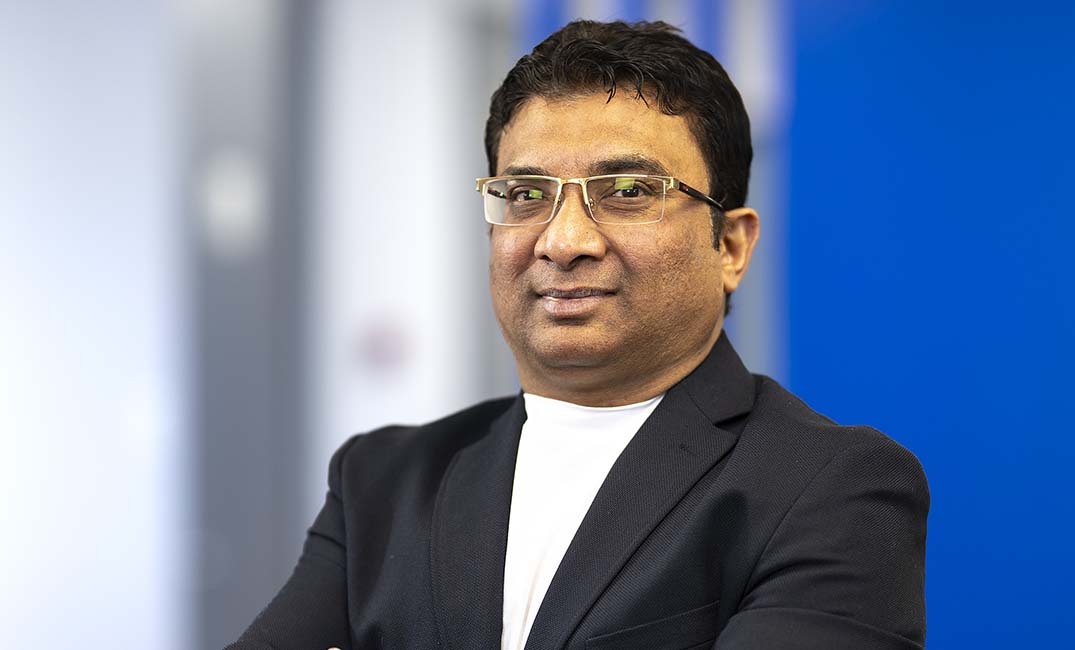The rollout of 5G networks in South Africa marks a transformative milestone in the evolution of connectivity, writes Avinash Gupta, head of centre of excellence at In2IT Technologies.
With the promise of faster speeds, ultra-low latency, and unprecedented device density, 5G opens up remarkable opportunities for the country’s growing urbanisation and industrial aspirations.
It paves the way for a future where Internet of Things (IoT) applications and autonomous systems can thrive, to bring about a wave of innovation and progress.
Enhanced connectivity for real-time data processing
The ability to support real-time data processing is at the heart of 5G’s value proposition. Unlike its predecessor, 4G, which struggled with latency and bandwidth limitations, 5G enables ultra-reliable low-latency communication (URLLC). This feature is critical for applications where delays can have serious consequences, such as autonomous vehicles or industrial automation.
For instance, autonomous vehicles rely on real-time data from sensors to make split-second decisions. A delay in processing this data could result in accidents. With 5G, latency drops to under one millisecond, ensuring that vehicles can communicate with each other and the infrastructure in near real-time.
In South Africa, where traffic congestion is a growing concern in cities like Johannesburg and Cape Town, 5G-enabled smart traffic systems could dynamically adjust traffic lights based on real-time conditions, significantly reducing bottlenecks.
The symbiosis of 5G and edge computing
One of the most exciting synergies emerging from 5G is its integration with edge computing. Edge computing brings data processing closer to the source – a factory floor or a smart city sensor – reducing the need to send data back and forth to centralised cloud servers. When combined with 5G’s high-speed connectivity, this approach minimises latency while optimising bandwidth.
Consider the potential in industrial automation: factories equipped with IoT-enabled machinery can use edge computing to process operational data locally while leveraging 5G to transmit critical insights to central systems for broader analysis. This setup not only improves efficiency but also reduces downtime through predictive maintenance.
For industries like mining or manufacturing, which are pivotal to the economy, such advancements could lead to safer operations and higher productivity.
Transforming IoT connectivity
IoT devices are proliferating at an unprecedented rate, from smart home appliances to industrial sensors. However, many current networks struggle to handle the sheer volume of devices. Enter massive machine-type communication (mMTC), another key feature of 5G that supports up to a million devices per square kilometre.
In practical terms, smart cities can deploy thousands of IoT sensors for applications ranging from environmental monitoring to public safety without overloading the network. For example, IoT sensors could monitor air quality in urban areas like Durban or detect structural weaknesses in bridges before they become safety hazards.
These capabilities are particularly relevant in South Africa, where infrastructure development often lags urban growth.
The role of expert IT companies
The immense potential of 5G technology can only be fully realised through expertise in network deployment, IoT integration, and cybersecurity. Third-party IT companies are pivotal in bridging the gap between technological possibilities and practical implementation.
Deploying 5G networks presents significant technical challenges, including the need for new infrastructure tailored to specific industries or regions. However, the expertise of IT Companies can help overcome these hurdles.
Unlike previous generations of cellular technology, 5G requires a dense network of small cells and antennas, particularly for high frequency mmWave bands. IT companies can assist telecom providers in overcoming these hurdles by designing and deploying infrastructure that meets the unique demands of urban environments or industrial applications.
Another critical area is IoT integration. Many businesses lack the in-house expertise to seamlessly incorporate IoT devices into their operations. Third-party IT providers can design customised solutions that leverage 5G’s capabilities, enabling businesses to optimise processes and unlock new efficiencies.
Cybersecurity is another pressing concern, as increased connectivity brings greater risks. Third-party IT firms can provide robust security solutions to safeguard sensitive data transmitted across 5G networks. This is particularly important for sectors like healthcare or finance, where data breaches could have severe consequences.
Finally, adopting new technologies often requires workforce training and ongoing support. IT companies can offer these services, ensuring businesses maximise their investments in 5G-enabled systems while minimising disruptions during the transition.
Challenges and opportunities in South Africa
South Africa’s socio-economic landscape presents a unique blend of challenges and opportunities for 5G adoption. While urban areas like Johannesburg and Cape Town are starting to benefit from 5G deployment, rural regions face delays due to infrastructure limitations.
The lack of fibre backhaul in many areas is a significant barrier, as 5G networks require high-speed connections to function effectively. This disparity could exacerbate the digital divide unless deliberate efforts are made to include underserved communities.
Cost barriers also pose a challenge. Upgrading devices and systems to be compatible with 5G can be prohibitively expensive for smaller businesses or low-income households. However, innovative financing models or public-private partnerships could help mitigate these costs, ensuring broader access to the technology.
On the flip side, the widespread adoption of 5G can spur economic growth by enabling new industries and improving efficiency across existing ones. For example, smart city initiatives powered by 5G could address urban challenges like traffic congestion or energy management.
Similarly, in agriculture – a vital sector for South Africa – IoT sensors connected via 5G could optimise irrigation and crop monitoring, boosting productivity while conserving resources.
By addressing these challenges head-on, South Africa has an opportunity to harness 5G as a catalyst for inclusive growth and innovation across multiple sectors.
Third-party IT companies have a vital role in this transformation by providing the expertise needed for successful implementation. As South Africa continues its journey toward digital transformation, embracing the full potential of 5G will be essential for unlocking a smarter, more connected future.

